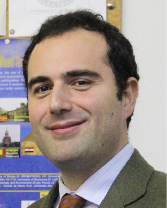Discovering the optimal distance between spatial orthogonal tunnels: A dynamic analysis using Tehran metro as a case study
Abstract
This study investigates the dynamic behavior of spatially orthogonal tunnels by employing three-dimensional numerical modeling and analyzing four different placement scenarios to determine the optimal tunnel spacing for minimizing mutual interaction while ensuring operational efficiency. This comprehensive research fills a vital gap in dynamic tunnel interaction studies and provides valuable insights for tunnel engineering in urban environments. Furthermore, in this research, the influence and response of adjacent shield tunnels under seismic conditions was evaluated based on the Tabas earthquake spectrum. Moreover, to enhance the accuracy of assumptions and achieve more logical results, the study utilizes the assumptions of the intersection tunnels of lines 6 and 7 of the Tehran metro. Dynamic analyses reveal that closer tunnel proximity (<0.5r) leads to increased bending moments, axial forces and displacements due to stress field interference, underscoring the critical importance of proper tunnel placement. Furthermore, results of the internal forces and displacements in both adjacent tunnels under dynamic loading show that positioning scenario case 2 (distance of tunnels is equal to their radius) is the most suitable option. In this scenario (compared to scenario case 1), the tunnels are less affected by each other’s stress field, and also in this positioning scenario (compared to scenarios 3 and 4), access from the ground surface to the lower tunnel will be easier and with lower construction costs.
Copyright (c) 2024 Mehrdad Mohammadifar, Tohid Asheghi Mehmandari, Seyed Ali Mirjafari

This work is licensed under a Creative Commons Attribution 4.0 International License.
References
1. Mohammadifar M, Asheghi T, Fahimifar A. Parametric and Sensitivity Analysis on the Effects of Geotechnical Parameters on Tunnel Lining in Soil Surrounding. Journal of Structural and Construction Engineering (JSCE). 2024. doi: 10.22065/jsce.2024.422469.3250
2. Mehmandari TA. Experimental and numerical analysis of tunnel primary support using recycled, and hybrid fiber reinforced shotcrete. In: Structures. Elsevier. 2024.
3. Kim S. Model testing and analysis of interaction between tunnels in clay. University of Oxford; 1996.
4. Hunt D. Investigating ground movements caused by the construction of multiple tunnels in soft ground using laboratory model tests. Canadian Geotechnical Journal. 2007.
5. Asheghi Mehmandari T, Mohammadi D, Ahmadi M, et al. Fracture mechanism and ductility performances of fiber reinforced shotcrete under flexural loading insights from digital image correlation (DIC). Insight - Civil Engineering, doi: https://doi.org/10.18282/ice.v7i1.611.
6. Golshani A, Joneidi M, Majidian S. 3D numerical modeling for construction of tunnels intersections- case study of Hakim tunnel. Japanese Geotechnical Society Special Publication. 2015; 2(43): 1523-1527.
7. Lin SY, Yang J, Hung HH. Seismic Analysis of twin Tunnels by a Finite/Infinite Element Approach. International Journal of Geomechanics. 2017.
8. Yin M, Jiang H, Jiang Y, et al. Effect of the excavation clearance of an under-crossing shield tunnel on existing shield tunnels. Tunnelling and Underground Space Technology. 2018; 78: 245-258. doi: 10.1016/j.tust.2018.04.034
9. Zhang C, Zhang X, Fang Q. Behaviors of existing twin subway tunnels due to new subway station excavation below in close vicinity. Tunnelling and Underground Space Technology. 2018; 81: 121-128. doi: 10.1016/j.tust.2018.07.020
10. Jin YF, Zhu BQ, Yin ZY, et al. Three-dimensional numerical analysis of the interaction of two crossing tunnels in soft clay. Underground Space. 2019; 4(4): 310-327. doi: 10.1016/j.undsp.2019.04.002
11. Yang T, Rao Y, Wu H, Zhang J. Dynamic Response of Parallel Overlapped Tunnel under Seismic Loading by Shaking Table Tests. Shock and Vibration. 2021; 2021: 2535762.
12. Li P, Lei M. Research progress in the design and construction technology of crossing tunnels. Journal of Railway Science and Engineering. 2014; 11(1): 67-73.
13. Asheghi Mehmandari T. Engineering Concept and Construction Methods of High-Rise Building. Iran: Sanei; 2023. 308p.
14. Ren Y, Zhou S, Jia J, et al. The Influence of Construction Methods on the Stability of Tunnels and Ground Structures in the Construction of Urban Intersection Tunnels. Sustainability. 2023; 15(20): 14720. doi: 10.3390/su152014720
15. Naseri A, Maleki B, Asheghi Mehmandari T, et al. Investigating the Influence of Sample Geometric Variations on Mechanical Characterization in Rock and Concrete. 2024. doi:10.22044/jme.2024.14631.2759
16. Asheghi Mehmandari T, fahimifar A, Asemi F. The Effect of the Crack Initiation and Propagation on the P-Wave Velocity of Limestone and Plaster Subjected to Compressive Loading. AUT Journal of Civil Engineering. 2020; 4(1): 55-62. doi: 10.22060/ajce.2019.15984.5558
17. Zare P, Asheghi T, Fahimifar A, Zabetian S. Experimental Assessment of Damage and Crack Propagation Mechanism in Heterogeneous Rocks. In: 5th International Conference on Applied Research in Science and Engineering. University of Amsterdam, Netherlands. 2020.
18. Brady BH, Brown ET. Rock Mechanics for underground mining, 3rd ed. Kluwer Academic Publisher; 2004.
19. Shirizadeh H, Dehghan S. Determination of the optimal distance of non-planar cross tunnels using numerical method –A case study of the intersection of Tehran Metro Lines 6 and 7. Journal of Tunneling and Underground Space. 2017. doi: 10.22044/tuse.2017.4585.1274
20. Pacific Earthquake Engineering Research Center (PEER) ground motion database. Available online: https://ngawest2.berkeley.edu (accessed on 15 June 2024).
21. Kuhlemeyer RL, Lysmer J. Finite Element Method Accuracy for Wave Propagation Problems. Journal of the Soil Mechanics and Foundations Division. 1973; 99(5): 421-427. doi: 10.1061/jsfeaq.0001885
22. Penzien J, Wu CL. Stresses in linings of bored tunnels. International Journal of Earthquake Engineering and Structural Dynamics. 1998; 7: 283-300. doi: 10.1002/(SICI)1096-9845(199803)27:3<283::AID-EQE732>3.0.CO;2-T
23. Wang JN. Seismic Design of Tunnels: A State-of-the-art Approach. Parsons Brinckerhoff Quade & Douglas, Inc; 1993.
24. Lu Q, Chen S, Chang Y, et al. Comparison between Numerical and Analytical Analysis of the Dynamic Behavior of Circular Tunnels. Earth Sciences Research Journal. 2018; 22(2): 119-128. doi: 10.15446/esrj.v22n2.72248



